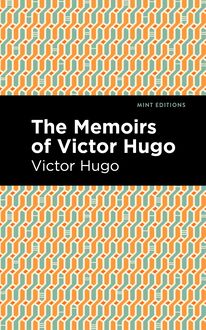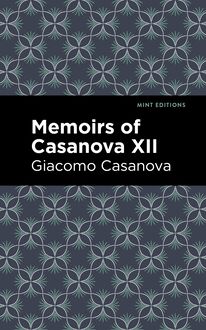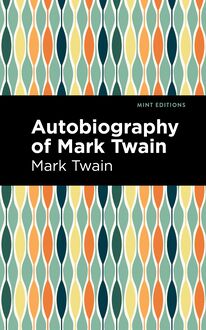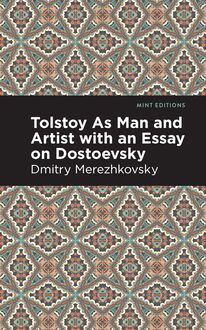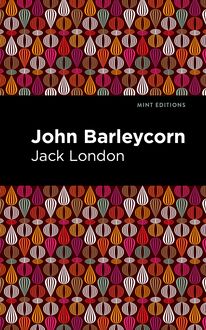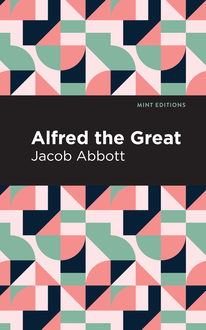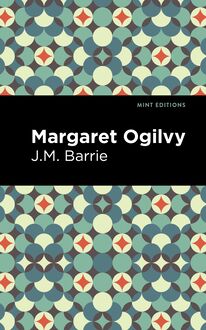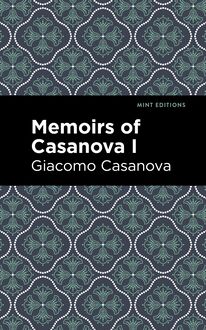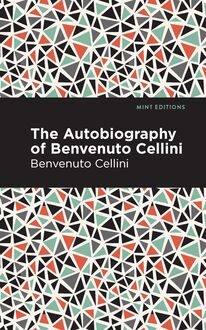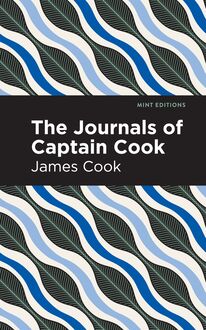-
 Univers
Univers
-
 Ebooks
Ebooks
-
 Livres audio
Livres audio
-
 Presse
Presse
-
 Podcasts
Podcasts
-
 BD
BD
-
 Documents
Documents
-
- Cours
- Révisions
- Ressources pédagogiques
- Sciences de l’éducation
- Manuels scolaires
- Langues
- Travaux de classe
- Annales de BEP
- Etudes supérieures
- Maternelle et primaire
- Fiches de lecture
- Orientation scolaire
- Méthodologie
- Corrigés de devoir
- Annales d’examens et concours
- Annales du bac
- Annales du brevet
- Rapports de stage
La lecture à portée de main
Vous pourrez modifier la taille du texte de cet ouvrage
Découvre YouScribe en t'inscrivant gratuitement
Je m'inscrisLife and Letters of Emily Dickinson , livre ebook
Découvre YouScribe en t'inscrivant gratuitement
Je m'inscrisEn savoir plus
Vous pourrez modifier la taille du texte de cet ouvrage
En savoir plus

Description
Published in 1924, The Life and Letters of Emily Dickinson is a biography by her niece Martha Dickinson Bianchi. Featuring detailed biographical essays and her letters, for the first time arranged chronically, the book stands as a retelling of her aunt’s life from the perspective of family in an attempt to challenge the image of Emily Dickinson as a cold, isolated woman of mystery. With an eye-catching new cover, and professionally typeset manuscript, this edition of The Life and Letters of Emily Dickinson is a must-read biography reimagined for modern readers.
Sujets
Informations
| Publié par | Mint Editions |
| Date de parution | 28 septembre 2021 |
| Nombre de lectures | 0 |
| EAN13 | 9781513212029 |
| Langue | English |
| Poids de l'ouvrage | 1 Mo |
Informations légales : prix de location à la page 0,0500€. Cette information est donnée uniquement à titre indicatif conformément à la législation en vigueur.
Extrait
The Life and Letters of Emily Dickinson
Martha Dickinson Bianchi and Emily Dickinson
The Life and Letters of Emily Dickinson was first published in 1924.
This edition published by Mint Editions 2021.
ISBN 9781513212128 | E-ISBN 9781513212029
Published by Mint Editions®
minteditionbooks.com
Publishing Director: Jennifer Newens
Design & Production: Rachel Lopez Metzger
Project Manager: Micaela Clark
Typesetting: Westchester Publishing Services
For their enthusiasm, intuitive understanding, and critical assistance, my gratitude to Ferris Greenslet, Curtis Hidden Page, and Alfred Leete Hampson
M. D. B.
A Mystic akin only to Emerson.” W.P. Dawson, the English critic, in his own anthology states without apology: “Among the American poets I have named two—Poe and Emily Dickinson.” And it was another Englishman, Martin Armstrong, writing of her poetry in the London “Spectator” last January (1923), who concluded: “Mr. Conrad Aiken in his recent anthology of modern American poets calls Emily Dickinson’s poetry ‘perhaps the finest by a woman in the English language.’ I quarrel only with his ‘perhaps.’ ”
However the present volume may lift the veil, or presume to lead her shy reality into the light of mortal dawns again, Emily alone supplies the only clue to herself, the articles of her Faith—
The Soul’s superior instants
Occur to Her alone,
When friend and earth’s occasion
Have infinite withdrawn.
Or she, Herself, ascended
To too remote a height,
For lower recognition
Than Her Omnipotent.
This mortal abolition
Is seldom, but as fair
As Apparition—subject
To autocratic air.
Eternity’s disclosure
To favorites, a few,
Of the Colossal substance
Of immortality.
The essential difficulty in presenting a Life of Emily Dickinson has been enhanced by the sacred pact observed with her chosen few, that all letters should be burned after her death. This excludes exactly those which might have held together the frail external incidents of her days, which seem so scantily supplied to those ignorant of the thronging events of the Spirit which eternally preoccupied her.
This present record is made up from family letters hitherto withheld, deathless recollections, and many sentences overheard from her own lips and scrupulously set down as too unique to be squandered upon the passing moment. The Letters formerly printed have now been chronologically arranged, and as far as of intrinsic value, retained; others have been added from my article in the “Atlantic Monthly,” and “The Single Hound,” a volume composed entirely of poetic flashes sent to her brother’s wife, my mother, on every gust of impulse.
A high exigence constrains the sole survivor of her family to state her simply and truthfully, in view of a public which has, doubtless without intention, misunderstood and exaggerated her seclusion—amassing a really voluminous stock of quite lurid misinformation of irrelevant personalities. She has been taught in colleges as a weird recluse, rehearsed to women’s clubs as a lovelorn sentimentalist—even betrayed by one American essayist of repute to appear a fantastic eccentric.
On the other hand, she has been named “the Feminine Walt Whitman” in at least one of the great universities; in another—
Of the Colossal substance
Of immortality.
M ARTHA D ICKINSON B IANCHI
C ONTENTS P ART I. L IFE I. A NCESTRY II. C HILDHOOD III. S CHOOL D AYS IV. S OCIAL L IFE AT A MHERST S EVENTY Y EARS A GO V. “T HE E ND OF P EACE ” VI. “A H EDGE A WAY ” VII. L ATER Y EARS WITH B OOKS AND F RIENDS VIII. H ER R ELIGION P ART II. L ETTERS OF E MILY D ICKINSON L ETTERS OF E MILY D ICKINSON
PART I
LIFE
I
A NCESTRY
There was nothing in the parentage or direct heredity of Emily Dickinson to account for her genius. There was equally nothing to impede its course or contradict its authority. It claimed her without those dissenting elements of being which came to her from her ideally mated but completely opposite father and mother. Her parents did not interfere with her actual life and behavior, both because they never realized her preoccupation quite fully, and because they had no will to destroy the individuality of anyone of their three children.
Nothing could have been more alien to any of the Dickinsons than a desire to be peculiar—“queer” they would have called it—or to do what the later generation calls pose. Eccentricity consciously indulged in would have merely been reprimanded as bad manners. Their dignity was of the stiff, reserved type resenting the least encroachment on its individuality in character and privacy in habit—which they insured by conforming handsomely to the sense of their community, the laws of their state and country, and the will of God as expounded from pulpits of the white meeting-house in Hadley and later in Amherst, where the colonial train of Emily Dickinson’s ancestors undeviatingly worshipped. There was no allowance made in her family for oddity—temperament had not been discovered yet. There was no exception to what was expected of each of the children alike, her sister Lavinia, her brother Austin, and herself. What Emily did succeed in evading and eluding and imagining and believing, and setting down for those who came after her to profit by, was her own performance, dictated by her own need for the solitude in which to write, and the time necessary for thought. She was spared none of her share in the household duties, nor did she wish to be.
Before one thinks of her as a poet and philosopher or mystic, one must in honesty remember her as an adoring and devoted daughter, a sister loyal to blows, a real nun of the home, without affectation or ritual beyond that of her gentle daily task, and all that she could devise of loving addition to the simple sum. To one who loved her it is unthinkable that she could ever be supposed to have consciously secreted herself, or self-consciously indulged in whim or extravaganza in living, which her fine breeding would have been the first to discard as vulgar and unworthy. It was her absorption in her own world that made her unaware often of the more visible world of those who never see beyond it. It was not that she was introspective, egoistic, and selfish—rather that she dwelt so far out in the changing beauty of Nature, in the loves and joys and sorrows of the dear ones she held closest, in the simple drama of the neighborhood, and most of all the stupendous and sometimes revealing wonder of life and death and the Almighty God thundered at her from the high pulpit on Sundays—and known so differently in her own soul the other days of the week—that she never thought of Emily Dickinson at all; never supposed anyone watched her way of living or worshipping or acting. She never had time in all the vivid, thrilling, incessant programme of night and day, summer and winter, bird and flower, the terror lest evil overtake her loved ones, the glory in their least success—never stopped in her flying wild hours of inward rapture over a beauty perceived or a winged word caught and spun into the fabric of her thought—to wonder or to care if no one knew she was, or how she proceeded in the behavior of her own small tremendous affair of life.
Her heredity is distinctly traced for nine generations in America. Her first local ancestor settled in old Hadley and a later generation was one of the founders of the church and town of Amherst. There were Dickinsons mentioned in Hadley among the first letters of the original Indian grants in 1659. And when in 1714 the order was given for five men to superintend the erection of a new meeting-house in the middle of two streets, one of them was a Dickinson. There was also an ancestor in the famous “Shays’s Rebellion” in 1786. Before that, in England, the stock from which she came was clear for thirteen generations more. Further than that her father’s curiosity or pride had never gone in research.
Her own grandfather, Samuel Fowler Dickinson, was the first of her direct line in Amherst. His connection with the establishment of Amherst Academy, from which the College later sprang, is familiar local history. In his fervor for “the in-bringing of the Kingdom” he foresaw the universal education of ministers, and calculated the millennium in the near future of “about seven years.” He was educated at Dartmouth College, a man of sincere piety, and a generosity that was his financial ruin. In a letter from his sister, Emily’s Aunt Lucretia, to his son Edward at Yale, the following passage occurs. It is dated 1821:
Father left in the yellow gig for the Bay Road this morning. He has gone to Boston by coach to see about getting a charter for something they propose to call Amherst College. He looked so fine in his white beaver and new great coat.
Until this ardent enthusiast, almost bigot, lost all the money he had not previously given away in his fanaticism for education and religion, the family throve and were favorably known for this world’s prosperity as well as in matters of piety and attainment.
His oldest son Edward, who was the father of Emily, was brought up strictly and with a regard for the needs of the missionaries first. He was sent to Yale College, driven there, too, in the family chaise upon at least one trip mentioned in the family correspondence. The family letters during that period are happily at hand and throw a profound and touching atmosphere about these earlier days of education, when it was a sacred boon possible to the few through fierce sacrifice, often, on the part of those who gave it, and not to be entered into with less than a consecrated spirit of trust for those to whom it was to be returned, transformed into a wisdom that was to help save the world.
In one letter from Samuel, who was a deacon for forty years in the First Church and whose zeal was sleepless, to Edward, his son, this passage strikes its own contrast to modern fathers and sons.
December 17, 1819, h
-
 Univers
Univers
-
 Ebooks
Ebooks
-
 Livres audio
Livres audio
-
 Presse
Presse
-
 Podcasts
Podcasts
-
 BD
BD
-
 Documents
Documents
-
Jeunesse
-
Littérature
-
Ressources professionnelles
-
Santé et bien-être
-
Savoirs
-
Education
-
Loisirs et hobbies
-
Art, musique et cinéma
-
Actualité et débat de société
-
Jeunesse
-
Littérature
-
Ressources professionnelles
-
Santé et bien-être
-
Savoirs
-
Education
-
Loisirs et hobbies
-
Art, musique et cinéma
-
Actualité et débat de société
-
Actualités
-
Lifestyle
-
Presse jeunesse
-
Presse professionnelle
-
Pratique
-
Presse sportive
-
Presse internationale
-
Culture & Médias
-
Action et Aventures
-
Science-fiction et Fantasy
-
Société
-
Jeunesse
-
Littérature
-
Ressources professionnelles
-
Santé et bien-être
-
Savoirs
-
Education
-
Loisirs et hobbies
-
Art, musique et cinéma
-
Actualité et débat de société
- Cours
- Révisions
- Ressources pédagogiques
- Sciences de l’éducation
- Manuels scolaires
- Langues
- Travaux de classe
- Annales de BEP
- Etudes supérieures
- Maternelle et primaire
- Fiches de lecture
- Orientation scolaire
- Méthodologie
- Corrigés de devoir
- Annales d’examens et concours
- Annales du bac
- Annales du brevet
- Rapports de stage
